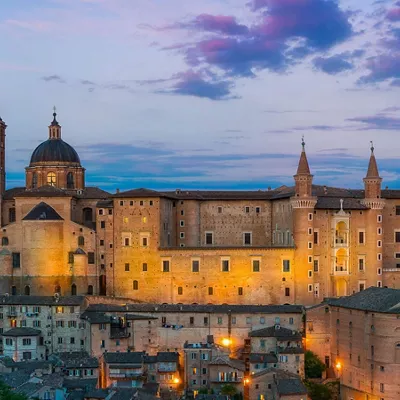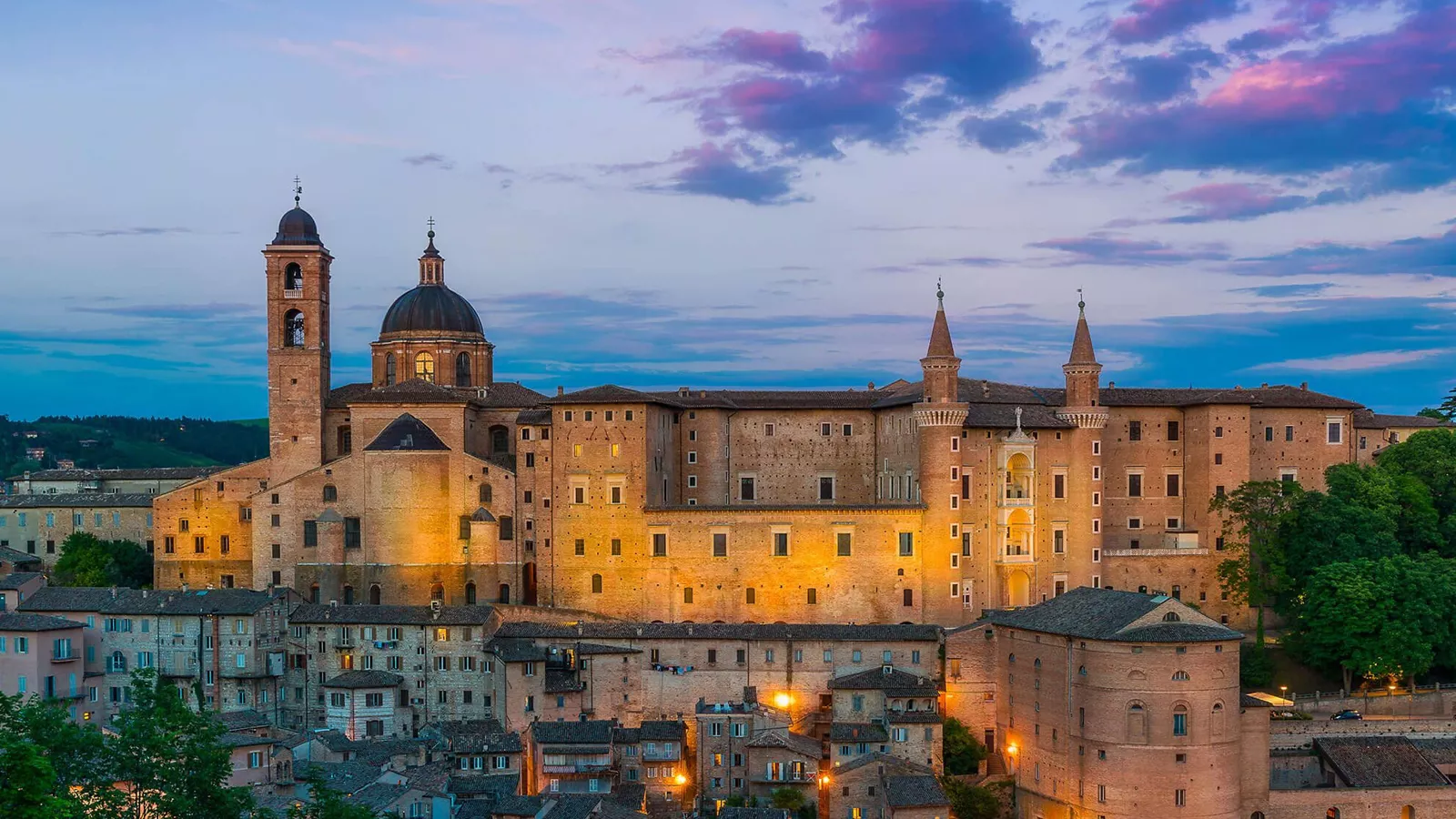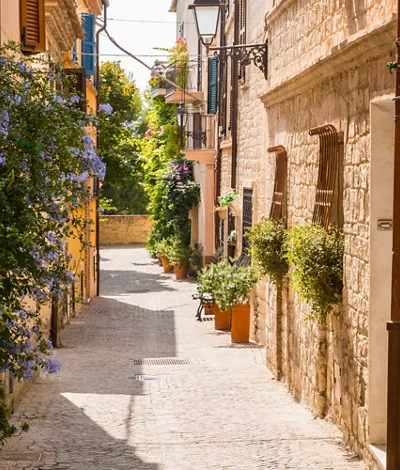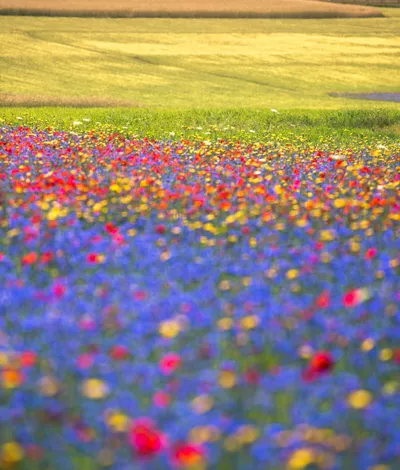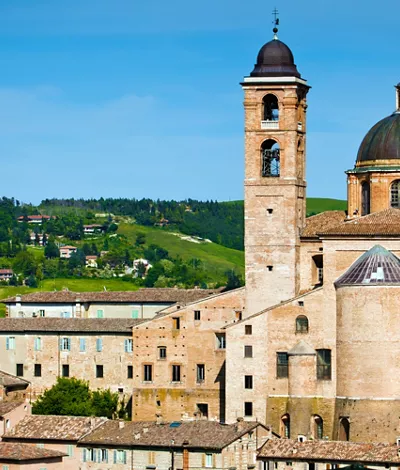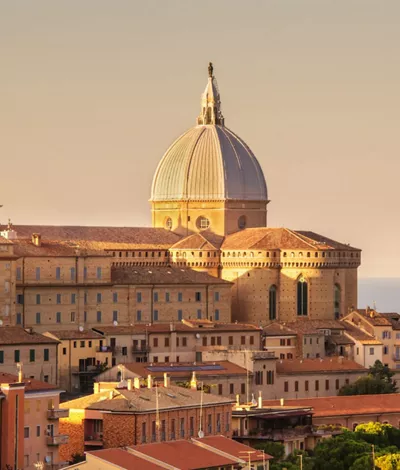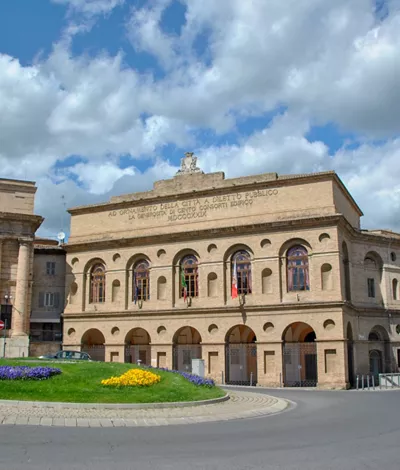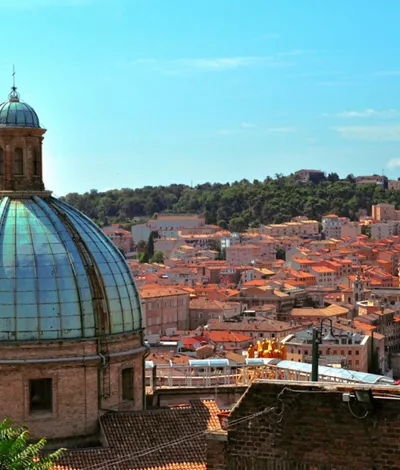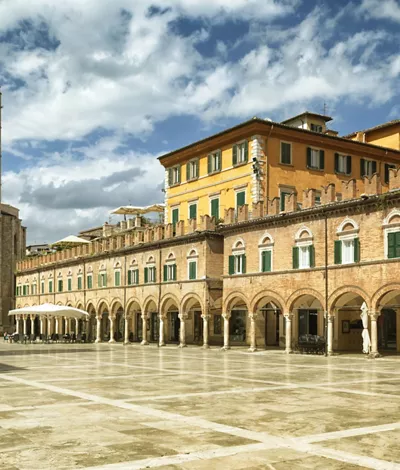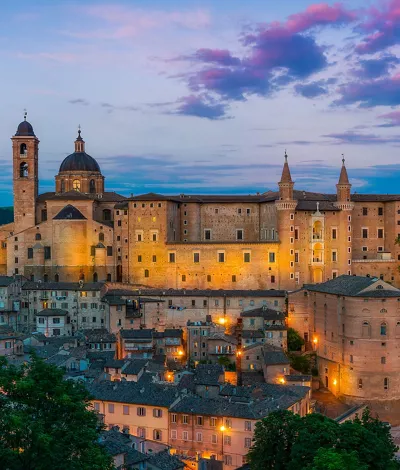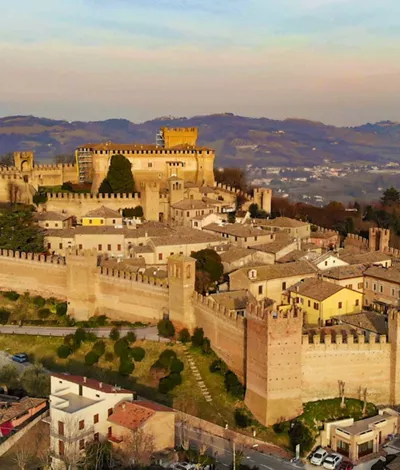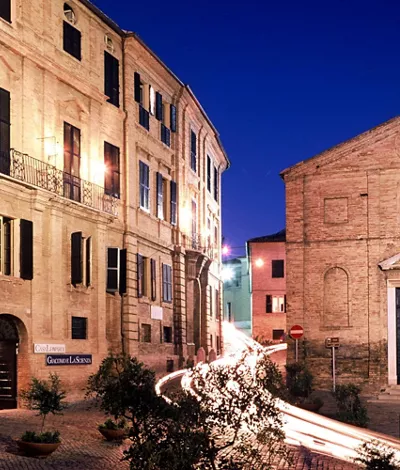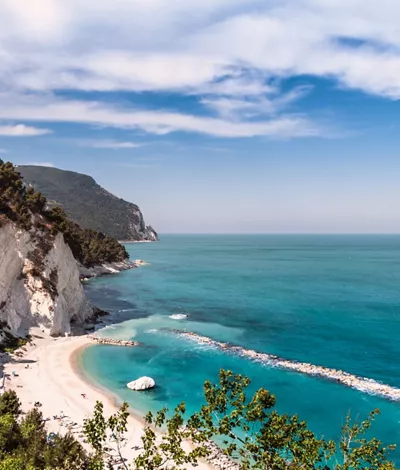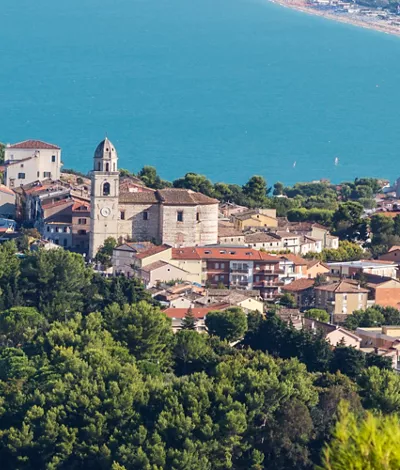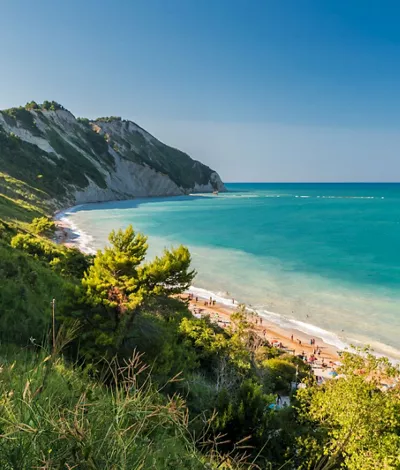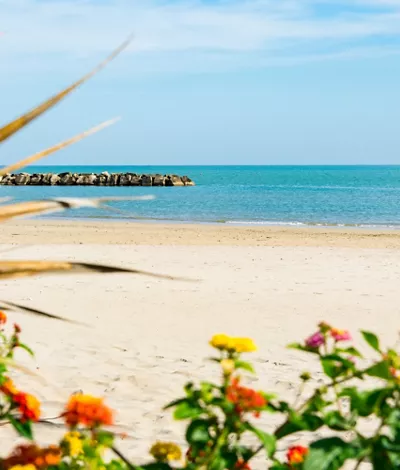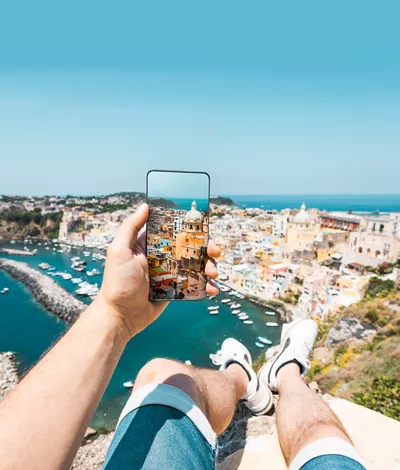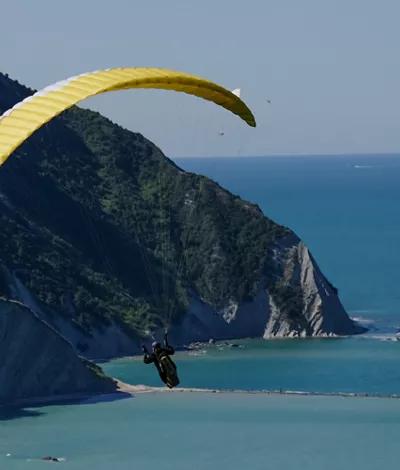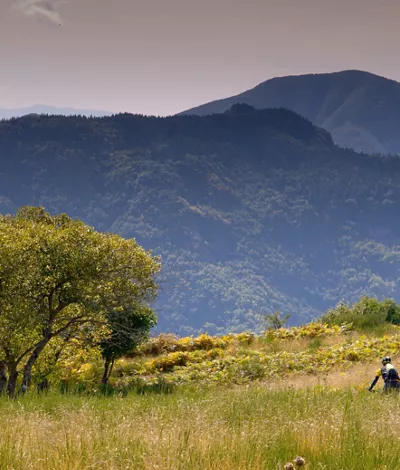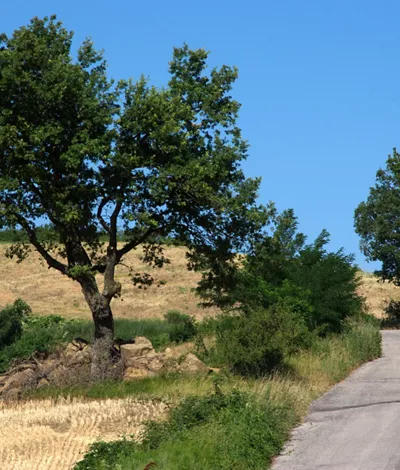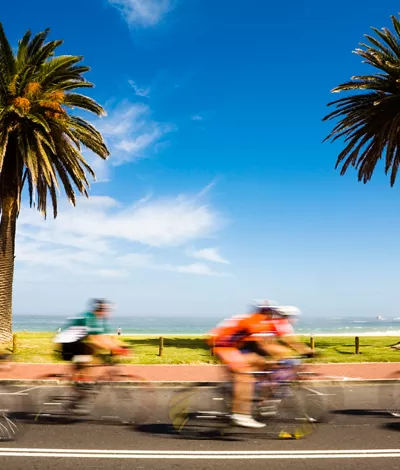Le Marche, a plunge into the history, art and architecture of a region with the scent of the sea and redolent of traditions and hospitality
A great variety of landscapes and an infinite range of colours that make the area's natural beauty incomparable, plus an artistic heritage that fears no comparison: this is how the Marches, with an area of no more than 10,000 square kilometres, will captivate you forever.
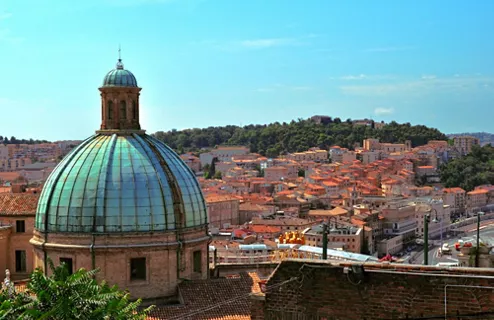
Ancona
Ancona: sentinel on the Adriatic Sea At the northern end of the Conero promontory, the city of Ancona stands on a natural harbour dominating a wide stretch of the Adriatic coast. Its historical centre, a few metres from the ferry embarkation point, holds art treasures, beautiful buildings and that liveliness that only port cities possess. To be discovered on foot, from the port to the Duomo, to the Cardeto park and the Passetto beach, where Ancona's inhabitants go to enjoy the sea, Ancona is a city that knows how to amaze. A stroll through historical sights and the sea view Upon arrival in Ancona, by car or from the station, one of the first monuments to attract attention is the pentagonal building at the entrance to the old port, the so-called Mole Vanvitelliana, named after its architect Luigi Vanvitelli, built as a lazaret for quarantine of people and goods coming from overseas, now converted to a space for cultural events. Continuing towards the maritime station, one can see the 15th-century Palazzo Benincasa and the Loggia dei Mercanti, the most important secular building in flamboyant Venetian Gothic style. Entering the historical centre, along Viale Mazzini, you can see the Renaissance Fontana del Calamo or Tredici Cannelle, with its bronze masks. Heading up towards the acropolis, after visiting the Mercato delle erbe (Herb Market), Art Nouveau structure in iron and cast iron, you will see the beautiful Church of Gesù, also by Vanvitelli, overlooking the sea. Next, the Roman Amphitheatre, rediscovered in the 19th century, and the Cathedral of St Ciriaco, Roman-Gothic basilica built on the remains of a temple dedicated to Venus and an early Christian basilica: spectacularly dominating the city and port. If you walk down towards the old harbour you can see the Arch of Trajan from the 2nd century AD and the Clementine Arch, an 18th-century work by Vanvitelli. To the south, Cardeto Park a green area on the hill of the same name where you can walk with the sea on the horizon: inside you will find the old lighthouse and the suggestive monumental Jewish cemetery, among the largest in Europe. Must-see museums in Ancona The National Archaeological Museum of Marche exhibits the largest collection of artefacts in the entire region from the Palaeolithic to the Classical period, where visiting the 16th-century Palazzo Ferretti with its rich decorations and splendid views of the port and bay of Ancona is possible. Ancona's history is reconstructed in the City Museum with documents, exhibits, models, educational panels, maps and videos. The Pinacoteca Comunale in Palazzo Bosdari exhibits masterpieces such as Titian's Gozzi Altarpiece, his first autograph work, Lorenzo Lotto's Sacred Conversation, and works by Sebastiano Del Piombo. A unique experience is offered by the Omero Tactile Museum, housed in the Mole Vanvitelliana, offering the rare opportunity to learn about art through touch, thanks to life-size plaster casts of sculptures, models of famous monuments and archaeological finds. Ancona’s beaches The best-loved and most popular beach for the people of Ancona is Passetto, a tongue of sand under the green promontory, which has the peculiarity of including more than 500 “caves” dug into the rock from the 19th century until the 1960s by locals. The reason? To store small boats and fishing gear. Each “cave” is enclosed, like a garage, with salvaged material of various kinds and colours: a picturesque ensemble. Less frequented, because access is difficult, is the Scalaccia beach at Pietralacroce. It is reached by steps, not always easy. Once there, however, the effort will be amply rewarded. Also beautiful and wild is the Mezzavalle beach, continuation of the Portonovo bay, of sand and gravel: reached by two steep paths to be tackled with suitable boots. What to eat in Ancona Among the most typical dishes of Ancona cuisine is stockfish or dried codfish cooked with potatoes, tomatoes and herbs. If you are wondering why cod – a fish from northern Europe – the answer lies in the frequency of trade contacts between Ancona and northern European countries. Here, as in many other towns in the Marche, we eat brodetto which is a typical fish soup, and the wild mosciolo of Portonovo, a type of mussel that lives on the Conero coast, recognised as a Slow Food presidium.
Discover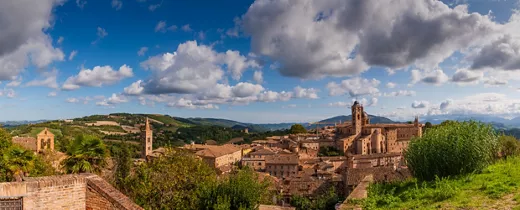
Pesaro-Urbino
Where culture and history meet the sea The province of Pesaro and Urbino in the Marche region is one of Italy's historical provinces. Overlooking the Adriatic Sea, Pesaro is a typical seaside town but what makes it special is not only its seven kilometres of beach on equipped and free coastline. Its historical centre guards an important artistic heritage. Not to be missed are the mosaics of the Cathedral and a tour of the places of Rossini's memory; indeed, Gioacchino Rossini was born in Pesaro in 1792. Two cultural events bring tourists and enthusiasts to the city: the Rossini Opera Festival and the Mostra Internazionale del Nuovo Cinema. Wandering around the alleys, buildings and squares of Urbino, it is easy to see why its historical centre is a UNESCO World Heritage Site. Start your tour at the Ducal Palace, which is more of a fortified city than a palace. Here, one of the iconic paintings of Italian art, Piero della Francesca's Ideal City, is preserved. If you are an art lover, don't miss the Galleria Nazionale delle Marche. Capital city but also small villages, Gradara and its fortress, and unspoilt nature such as that of the Sasso Simone and Simoncello Park: the province of Pesaro-Urbino holds great treasures. From Fano to Montefeltro, from Gabicce to the San Bartolo Riviera. Finally, for lovers of outdoor sports, 20 km from Urbino, the Marmitte dei Giganti offer a real show. Book a canoe tour to enjoy the beauty of the gorge from the inside. Combined with a trek inside the Furlo Gorge State Nature Reserve, the views are breathtaking.
Discover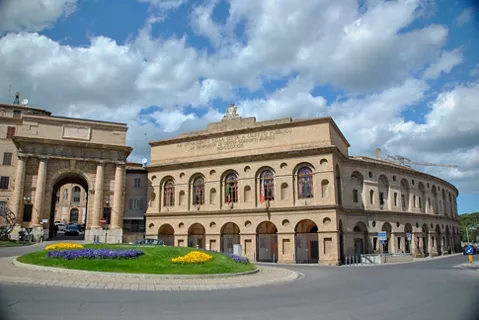
Macerata
The events linked to the origins of Macerata tell the tale of the arduous origins of a city now surrounded by peaceful, fertile countryside. The city of Macerata was founded by refugees fleeing the destruction of the Roman settlement Helvia Rìcina. It became a municipality in 1138 and an episcopal see in 1320. During the last two decades of the 16th century, Macerata's fame spread beyond the borders of Italy to China, when the learned priest Matteo Ricci left his native city to embark on missions in the Far East, becoming the first member of his religious order to be accepted at the Ming imperial court. Ricci, a Jesuit, had a huge influence on China. By the time of his death in Beijing in 1610, there were 300 Christian churches in China. In the meantime, Ricci's native city had begun to acquire the genteel, measured dignity for which it is still known today. The historic centre is entirely surrounded by the city walls, which were built during the 15th and 16th centuries and still virtually intact, giving Macerata the characteristic charm typical of Italian provincial cities. Macerata has its own opera and theatre season and is also a thriving university town: as genteel and peaceful as the city may appear, it's anything but dull! The sober elegance of the city centre opens onto the marvellous neoclassical Sferisterio, an open-air stadium built for the ancient ball game "pallone a bracciale”, which is now a venue for operatic performances and international events. Strolling through the city centre, you can admire historic buildings and churches in the Mannerist and Baroque styles, in the area around Piazza della Libertà. The four sides of the piazza bear signs of the city's refinement, with the City Hall, the 16th-century Apostolic Palace (now housing the Prefecture), the Civic Tower with its astronomical clock, the "Loggia dei Mercanti" (Merchants' Lodge) and Palazzo Ricci, with its 20th-century art collection featuring works by artists including Medardo Rosso, Balla, Boccioni, De Chirico and Burri, to name a few. On the same square, next to the Church of San Paolo, is an imposing archway marking the entrance to the University, one of the oldest in the world. Its academic faculties, one following another in via Don Minzoni since 1540, form a city within the city. Via Don Minzoni is also where you will find the beautiful Palazzo Buonaccorsi, home to the public museums with their collections of historic art, modern art, and the Carriage Museum. Here you can also admire the splendid frescoed vault of the Aeneid Hall, and don't miss Tintoretto's famous "Adoration of the Magi", which once embellished the beautiful church of Santa Maria delle Vergini, with its tapering octagonal dome, located about 2 km from Porta Picena. And the food? The fabulous flavours of the local produce are just waiting to be discovered.
Discover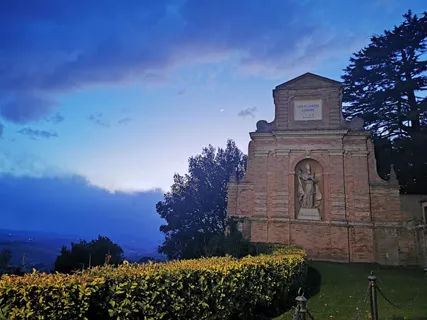
Fermo
Just 7 kilometres from the Adriatic sea, in a stunning location in the foothills separating the Eta Vivo and Tenna valleys, the city of Fermo extends over a steep hillside dominated by the Cathedral. Visitors are entranced by the amazing panoramicviews of the sea, from the scenic vistas along the roads and from the Girfalco hill to the unexpected glimpses between the rooftops. Capture the real charm and beauty of Fermo by taking a stroll through its narrow winding streets - often made entirely of terracotta, a legacy of the town's Roman and medieval origins - and through the alleys lined with dark shadowy buildings. Or admire the fifteenth-century palaces and Renaissance buildings that have silently witnessed the city's history over the centuries. You can find them in Corso Cavour, Corso Cefalonia and Piazza del Popolo: the true heart and symbol of Fermo. Piazza del Popolo, which has seen so much of the life of this city over the centuries, is also a beautiful gateway to the Girofalco hill. Overlooking the square are the city's iconic landmarks including the Renaissance-era Palazzo dei Priori, a historic building contains the public art gallery and the Sala del Mappamondo, or Globe Room. It is home to the library's oldest map collections and takes its name from the globe created in 1713 by the cartographer Amanzio Moroncelli from Fabriano. In the city centre you'll also find the Apostolic Palace and the Duomo, with its asymmetric facade made of Istrian stone. Inside, you'll find an impressive collection of artworks, including a 12th-century Greek-Byzantine icon and the remains of the mosaic floor from the 5th-century Paleochristian church on which it was built. The square with its loggia architecture is also used as a market area and meeting point, and is and the perfect place for a relaxing walk through the arcades. The loggia balcony connecting Palazzo dei Priori to Palazzo degli Studi is very beautiful: remember to look upwards as you walk along it, so as not to miss the beautiful frescoed vaults. And if you do happen to be in Fermo on a Thursday evening during the summer, you certainly won't want to miss the antiques and crafts market held in the arcades throughout July and August.
Discover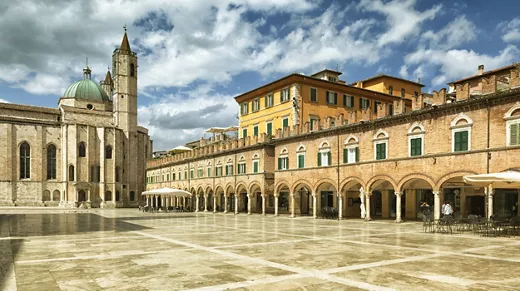
Ascoli Piceno
Just a stone's throw from the sea and made of travertine, the Marche town shines with golden light. In this timeless place, art, architecture and food and wine are the embodiment of Italian excellence at its finest. All this is Ascoli Piceno, a medieval city of a thousand surprises that is bound to win everyone over.
Discover
Discovering the Marche by bike, from Forca di Presta to Pescara del Tronto
Learn more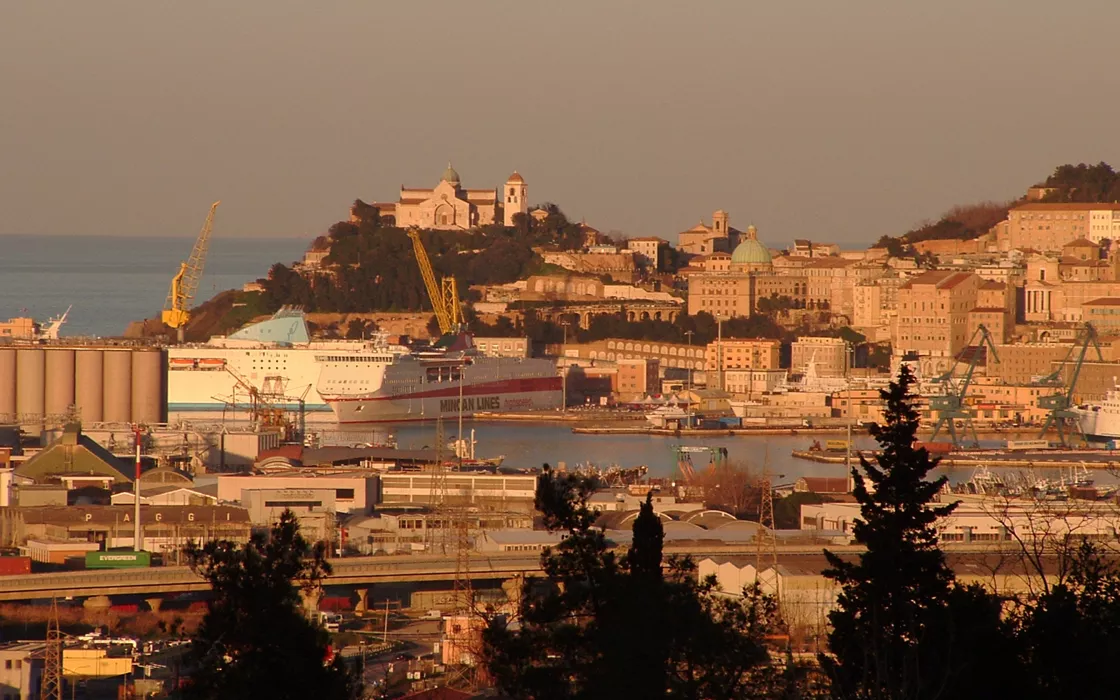

Ancona by electric scooter: from Mole to Parks and beaches
Learn more?wid=1600&hei=700&fit=constrain,1&fmt=webp)
An enchanting region of beaches, caves and mountains
Le Marche, a plunge into the history, art and architecture of a region with the scent of the sea and redolent of traditions and hospitality. A great variety of landscapes and an infinite range of colours that make the area's natural beauty incomparable, plus an artistic heritage that fears no comparison: this is how the Marches, with an area of no more than 10,000 square kilometres, will captivate you forever.
